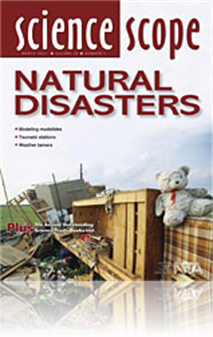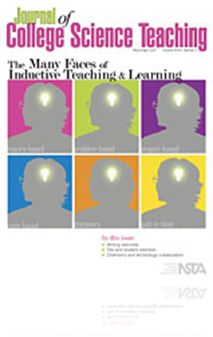All Resources
Journal Article
Science Sampler: Connecte2d Teaching—A comprehensive resource for teaching science using earthquakes
The Connecte2d Technology website is an all-inclusive web resource linking the study of earthquakes and engineering design to middle school science, mathematics, and technology. Through the use of interdisciplinary activities and hands-on projects, s...
Journal Article
Maria lifts up a book from the table. Dietre eats cereal for breakfast. Akisha winds up a toy robot. Jacob puts batteries in a flashlight. These seemingly dissimilar events demonstrate various ways children experience energy daily. You can help prima...
Journal Article
Science for ELLs: Rethinking Our Approach
Many educators feel ill-prepared to meet the academic needs of students from culturally and linguistically diverse backgrounds. As educators, we strive to guarantee science education opportunities for all students. Although much remains unknown, cu...
Journal Article
Favorite Demonstration: The School Dance, According to Le Chatelier
When teaching science, or any other topic, an example of the concept being taught taken from students’ past experiences is often valuable. A familiar situation can reduce the anxiety of an unfamiliar or intimidating subject and can make it more man...
Journal Article
In sixth grade, students understand that Earth gets visible light from the Sun, but students may also believe the Earth gets heat from the Sun. This last part is incorrect because the Sun is too far from the Earth to heat it directly. So, how does t...
Journal Article
Perspectives: Assessing for Science Learning
Often the word assessment conjures up the notion of tests or quizzes that occur at the end of a lesson or a unit. These summative assessments take place when an instructional sequence is completed, providing a summary of what students learned. The su...
Journal Article
Schoolyard Inquiry for English Language Learners
This article presents outdoor inquiry activities to help English Language Learner (ELL) students learn life science concepts. Through inductive outings, nature journaling, and multicultural gardening, beginner and intermediate students gain science-i...
Journal Article
Libros de Ciencias en Espanol (2007)
From eye-catching introductions to planets, animals, food, and the senses for the very young, to little-known aspects of dinosaurs, to the importance of food chains, these recently published books in Spanish are sure to engage and inform young Span...
Journal Article
Career of the Month: An interview with Honey Bee Scientist Eric Mussen
It’s common knowledge that honey bees collect nectar from flowers to make honey. But did you know honey is the only food we consume that is produced by insects? In addition, bees pollinate (fertilize) a staggering one-third of what we eat every day...
Journal Article
Every Day Science Calendar: March 2007
This monthly feature contains facts and challenges for the science explorer. ...






